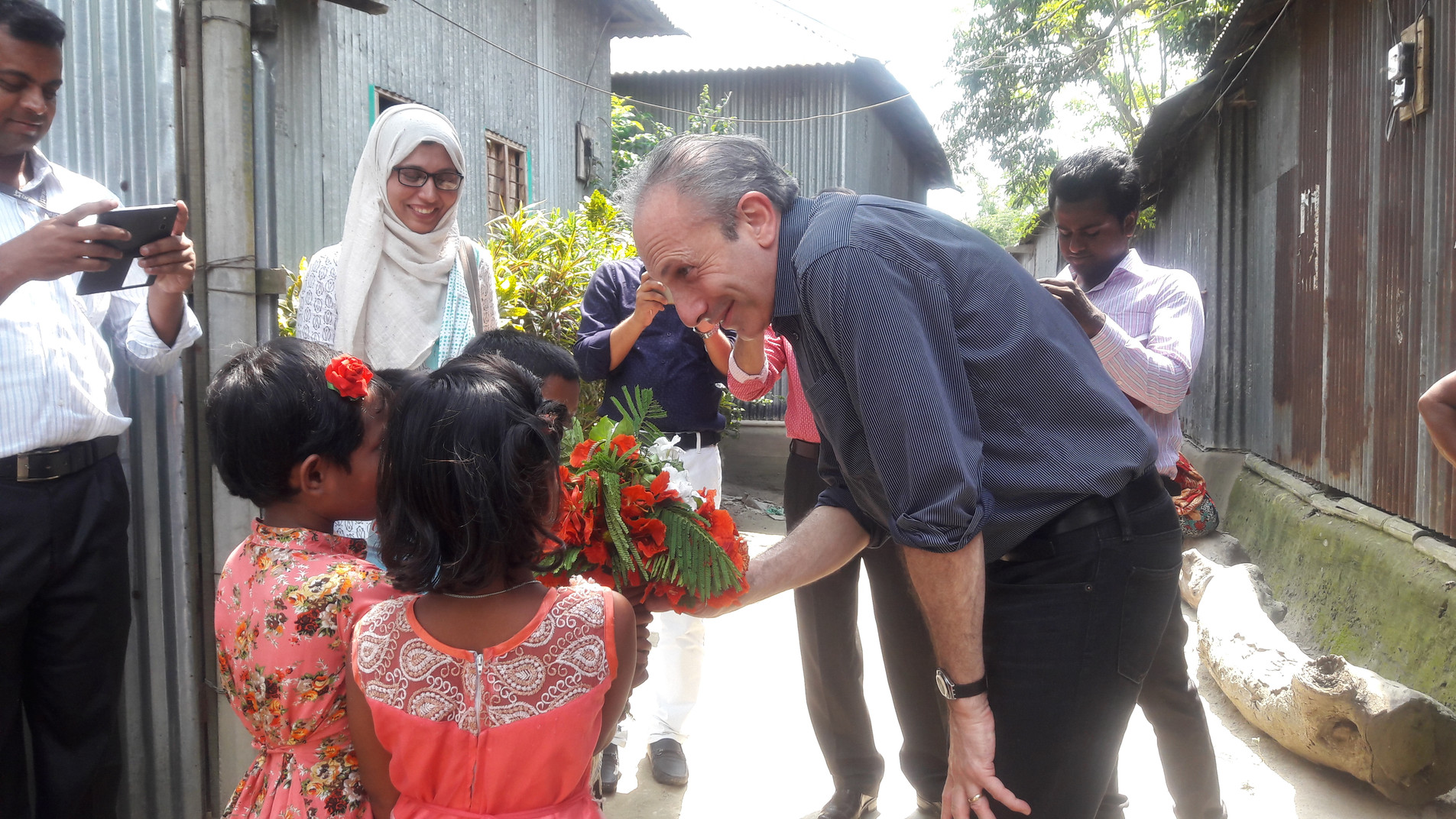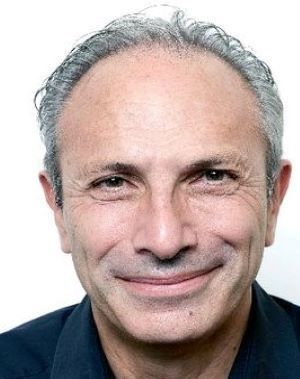
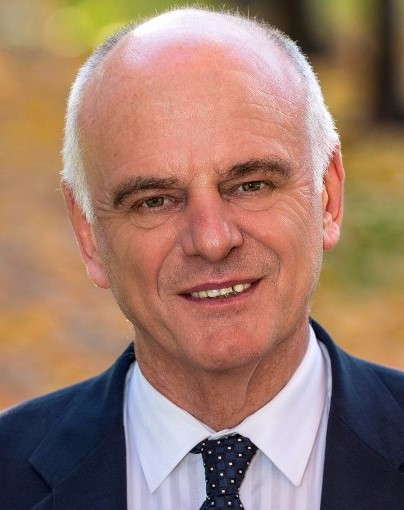
Dr. Lawrence Haddad and Dr. David Nabarro
UNITED KINGDOM/SOUTH AFRICA AND UNITED KINGDOM/UNITED NATIONS
Dr. Lawrence Haddad and Dr. David Nabarro received the 2018 World Food Prize for their individual and complementary global leadership in elevating maternal and child undernutrition to a central issue within the food security and development dialogue at national and international levels.
About the Laureates
A pioneer in food policy research, Dr. Haddad brought the issue of nutrition to the forefront by using both economic and medical research to convince development leaders to make child nutrition an urgent priority in the global food security agenda. Dr. Nabarro, a champion of public health in the United Nations, was directly responsible for uniting 54 countries and one Indian state under the Scaling Up Nutrition Movement to join forces and implement evidence-based policies and programs.
The 2018 Laureates’ work significantly improved nutrition for mothers and children in the critical first 1,000 days of life – the period from pregnancy to a child’s second birthday. Their relentless leadership and advocacy has also inspired efforts by countless others that have collectively reduced the world’s number of stunted children by 10 million between 2012 and 2017.
Haddad’s and Nabarro’s work in mobilizing political will to make nutrition the focal point of development strategies came in response to a sudden, near doubling of wheat, maize and rice prices that occurred in 2007-2008.
This price spike triggered a global food crisis that particularly affected women and children in developing nations. One in six people globally experienced severe poverty and hunger as staple foods became unaffordable.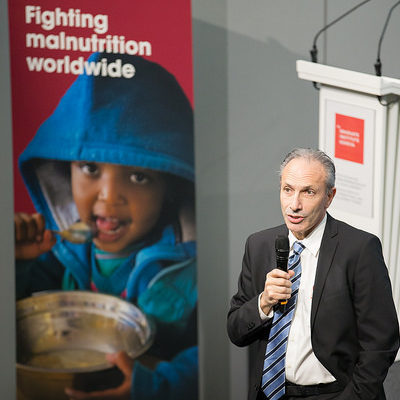
With less disposable income, those living in poverty were forced to spend most or all available income on essential staple grains, leaving little or no money for more nutritious vegetables, dairy, and fruit items.
This crisis threatened to reverse previous crucial gains toward reducing poverty and hunger as outlined in the UN Millennium Development Goals. Prior to the crisis, it was estimated that 854 million people worldwide were undernourished; by the time prices started going back down, the number had increased to almost one billion.
The food price crisis not only underscored the need for increased funding and sound policies supporting nutrition, but also revealed the global community’s inadequate attempts at integrating nutrition into development strategies. An eyeopening series of articles on maternal and child malnutrition published in The Lancet in 2008 called the global nutrition system “fragmented and dysfunctional.”
Save the Children called the situation “a myriad of international actors with overlapping remits but none with the key purpose of ensuring the efficacy of international donors, development organizations and governments in reducing malnutrition.”
In the wake of the food price crisis and sharp criticism of development agencies’ ineffective handling of nutrition, Haddad and Nabarro leapt into action, each rallying a broad and disparate group of food system stakeholders and development champions to rise to the challenge of prioritizing nutrition intervention policies and programs.
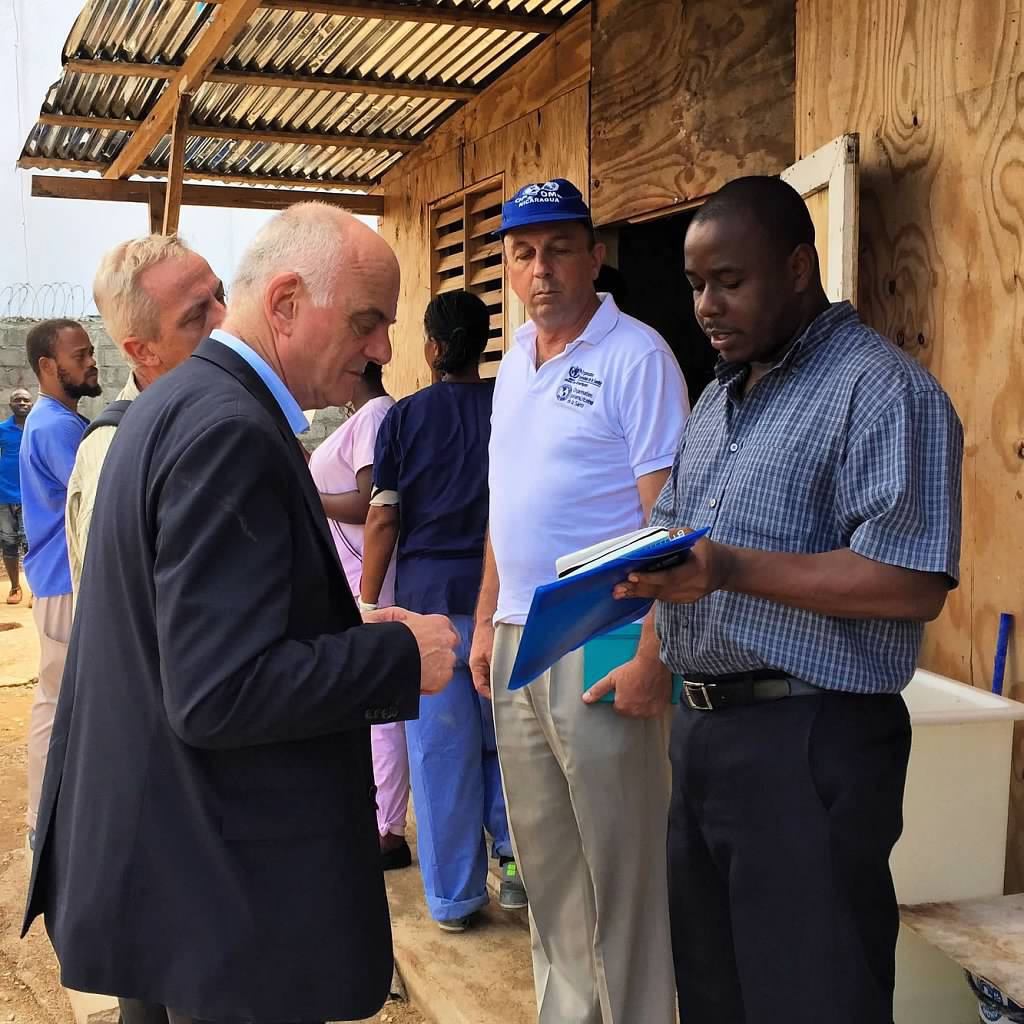 While Haddad used evidence-based arguments to convince policy-makers in the United Kingdom, Ireland, and many other countries to make nutrition a central part of their development strategies, Nabarro used his appointment as the Coordinator of the UN’s Scaling Up Nutrition (SUN) Movement to bring about commitments and partnerships toward the same purpose.
While Haddad used evidence-based arguments to convince policy-makers in the United Kingdom, Ireland, and many other countries to make nutrition a central part of their development strategies, Nabarro used his appointment as the Coordinator of the UN’s Scaling Up Nutrition (SUN) Movement to bring about commitments and partnerships toward the same purpose.
With a goal to ensure healthier and more productive lives for millions of children and their families, Haddad’s and Nabarro’s efforts brought forth first-ever commitments by governments, NGOs, donor agencies, businesses, and other key players to place nutrition as a top development priority. The policies that were put in place as a result have significantly reduced childhood malnutrition and stunting in many developing countries, from Ghana to Guatemala, from Cambodia to Kenya. Through effective coordination between the public health, agriculture and economic sectors, the number of stunted children under five in the world decreased from 165 million in 2012 to 155 million in 2017.
As former UN Secretary-General Ban Ki-moon stated in 2015, “Nutrition is both a maker and a marker of development. Improved nutrition is the platform for progress in health, education, employment, empowerment of women and the reduction of poverty and inequality, and can lay the foundation for peaceful, secure and stable societies.”
Through the efforts of Lawrence Haddad and David Nabarro, the legacy of the food price crisis for millions of children around the world will not be how they succumbed, but how they survived and thrived.
Full Biography
Lawrence Haddad
As head of the Institute of Development Studies (IDS) in the United Kingdom (UK) during the global food price crisis, Dr. Haddad’s research was aimed at helping UK policymakers see nutrition intervention through a new lens -- not only as a technical agriculture or health issue but as one linked directly to economic growth and food security. Haddad’s prior groundbreaking studies as the director of the Food Consumption and Nutrition Division at the International Food Policy Research Institute (IFPRI) incorporated insights from economic development research to provide the rationale for elevating child malnutrition to a central position on the development agenda.
As an evidence-based champion for nutrition, Haddad convinced the UK government and the Department for International Development (DFID) to substantially increase spending on reducing undernutrition in South Asia and sub-Saharan Africa and to participate in the UN’s country-led SUN Movement.
This targeted investment was aimed at significantly reducing stunting, anemia, and Vitamin A deficiency in children by ensuring access to nutritious food by poor families, especially pregnant mothers and very young children. Haddad expanded on these efforts as chair of the Global Nutrition Report, a comprehensive annual review of the state of the world’s progress against malnutrition.
In 2007, Haddad and IDS were commissioned by Save the Children to evaluate DFID and the European Commission (EC) on their commitments to improving nutrition. After analyzing speeches, policy documents, and expenditures on development, Haddad and IDS shockingly concluded that DFID and the EC had no clear nutrition strategy and did not measure the direct nutritional impact of their work. The report described the organizations’ views on nutrition as “everybody’s business and nobody’s responsibility.”
In response to the British House of Commons International Development Committee and a request from Prime Minister Gordon Brown in 2008, Haddad provided evidence-based recommendations on how best to structure DFID’s priorities for funding and programming over the coming years. His response was succinct: nutrition. Good nutrition is fundamental to a child’s physical and mental growth and development, and improving nutrition can prevent half of all child mortality under age five. What better use of aid, he argued, than saving children’s lives?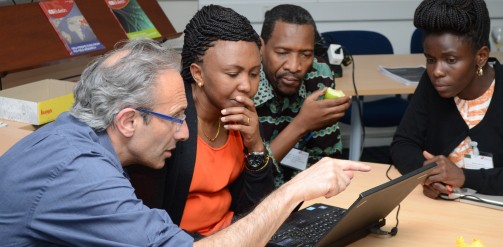
As one of seven Lead Experts on the UK Office of Science Foresight Report on the Future of Food and Farming, Haddad further influenced UK policymakers to make nutrition a priority. Haddad’s research, writings, and recommendations were heard by many in DFID, and as a result DFID’s spending on nutrition-related aid rose from $342 million in 2010 to $1 billion in 2015.
DFID emerged as a leader in nutrition funding, bringing many other organizations along with it by developing joint ventures and being among the first to invest in the SUN Movement. Haddad’s leadership at this critical time helped nutrition and food issues climb from the bottom rung to among the highest priority positions in the development agendas of many governments, donors, civil society organizations, and research institutions.
At the end of his second term as director of IDS in 2014, Haddad was given the opportunity to take the lead on the Global Nutrition Report (GNR), a new initiative that came out of the Nutrition for Growth Conference in London in 2013.
At this first Nutrition for Growth Conference, 100 stakeholders endorsed the Global Nutrition for Growth Compact and pledged new commitments amounting to $23 billion for nutrition projects. With all of these commitments, they also decided that an annual accountability report to assess the state of nutrition in the world would be necessary to create transparency in the process.
The food price crisis had underscored to Haddad, among other things, the weak accountability for nutrition. He set about creating a report that would get others committed to accountability and transparency for nutrition intervention and guide actions of stakeholders’ progress towards reducing malnutrition.
He gathered content and ideas from stakeholders across the public and private sectors and brought them together to work on the project, a difficult task given the long history of disagreements between different players in the nutrition field.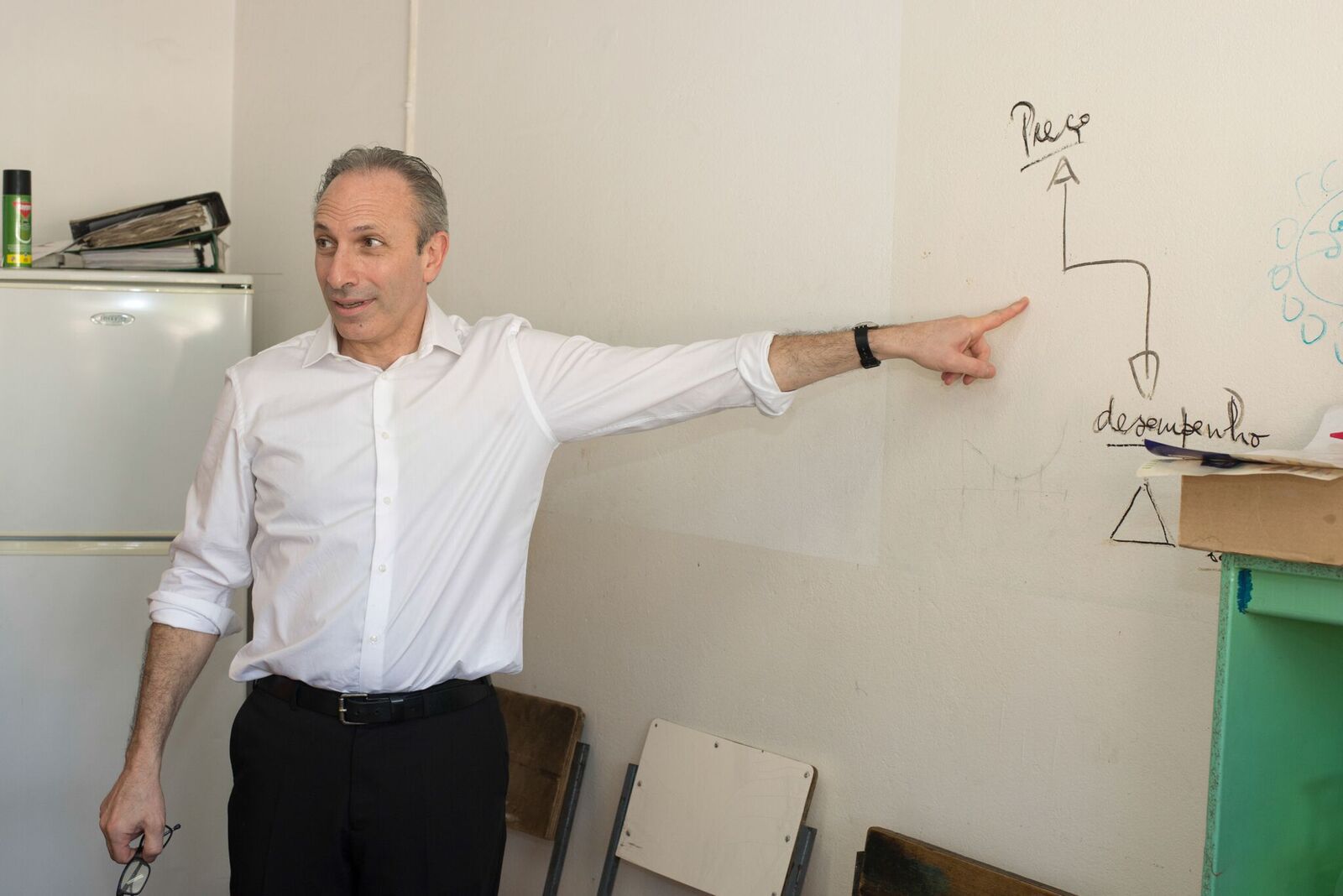
The first Global Nutrition Report was released in 2014 at the Second International Conference on Nutrition and was downloaded more times than the World Bank’s World Development Report of that year. The repository of global and country-level nutrition data and analysis compiled by Haddad and the writers of the report shed light on what progress governments were making in combating malnutrition in their countries and empowered the nutrition champions of those countries to strengthen the case for increased resources and funding as well as informed policy decisions for nutrition.
An impactful, oft-quoted finding of this first Global Nutrition Report was that each dollar invested in nutrition in a developing country yields 16 dollars in economic returns, which showed that money spent on combating childhood malnutrition is one of the best investments a government can make. By the time the 2016 annual GNR came out, the SUN Movement had adopted the GNR’s findings and metrics for use in their own evaluations and progress reports.
Dissatisfied with the widespread negative attitude towards the private sector of many agencies working in nutrition, Haddad applied to the position of Executive Director of the Global Alliance for Improved Nutrition (GAIN) in 2016.
For the last two years he has endeavored to further the mission of GAIN to collaborate with private and public sector partners to improve nutrition outcomes by making healthier food choices more affordable, more available, and more desirable, especially for the most vulnerable people.
In February of 2017, he was also appointed to the SUN Movement Executive Committee, where he strives to oversee the development and implementation of the Movement’s strategy to work collaboratively with all sectors and stakeholders to end malnutrition in all its forms.
Early Life, Education, and Career
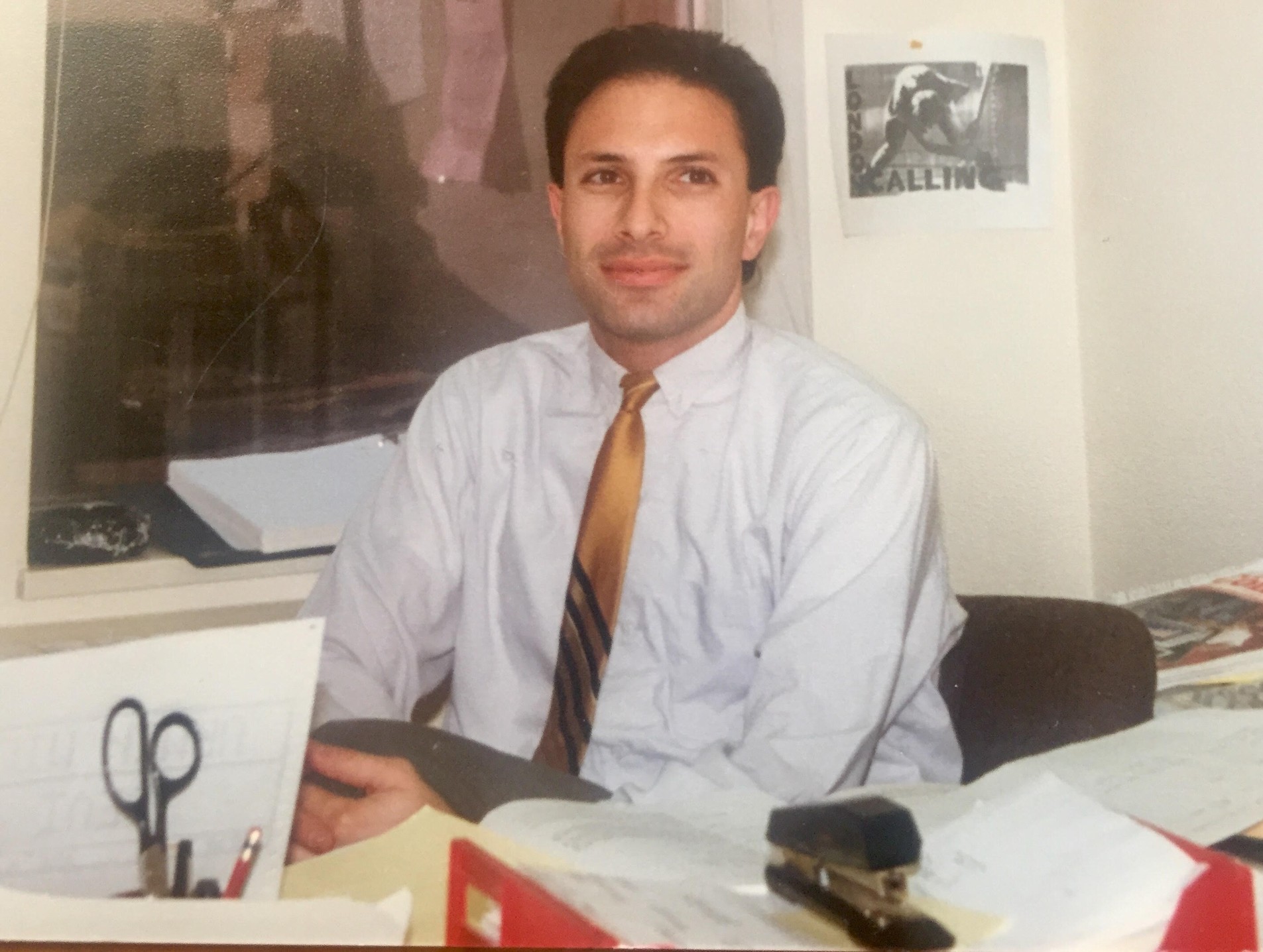 Lawrence Haddad was born in 1959 in Johannesburg, South Africa, to the children of Lebanese immigrants. Fearing what might happen to them under apartheid, his parents decided to emigrate, settling in London in 1961. After his parents split up when he was seven, Haddad lived with his mother, grandmother, and infant sister in a one-bedroom flat in east London for more than a year. The family later moved to a state-sponsored tower block, where they lived for the next seven years. As a full-time single parent to two young children, Haddad’s mother relied on state welfare programs and her own resourcefulness and frugal spending to get them by. She was able to send Haddad and his sister to a good school, and was relentless in encouraging their studies, believing that their education was the way out of their circumstances.
Lawrence Haddad was born in 1959 in Johannesburg, South Africa, to the children of Lebanese immigrants. Fearing what might happen to them under apartheid, his parents decided to emigrate, settling in London in 1961. After his parents split up when he was seven, Haddad lived with his mother, grandmother, and infant sister in a one-bedroom flat in east London for more than a year. The family later moved to a state-sponsored tower block, where they lived for the next seven years. As a full-time single parent to two young children, Haddad’s mother relied on state welfare programs and her own resourcefulness and frugal spending to get them by. She was able to send Haddad and his sister to a good school, and was relentless in encouraging their studies, believing that their education was the way out of their circumstances.
Haddad recalls receiving free lunches at school, but being issued a different color ticket than the pupils that paid for their lunch. This early experience highlighted to him the importance of the role the public safety net system plays for families, and also the importance of stigma and human dignity in these programs. He brought these experiences into his later work on social protection programs such as food stamps. Another experience that shaped his interests was volunteering with his mother at a Save the Children charity shop. He spoke to the other volunteers there about the mission of Save the Children, and learned from them about the humanitarian work that was being done in countries that until then he’d never heard of.
In 1980, Haddad received his bachelor’s degree in Food Science and Food Economics from the University of Reading, and with the encouragement of one of his professors, went on to the University of Massachusetts, where he earned his master’s degree in Resource Economics with a minor in Nutrition in 1982. His advisor at the University of Massachusetts recommended that he apply to Stanford University, which he attended on a three-year fellowship.
After two years of study at Stanford, Haddad took a summer internship position at IFPRI. 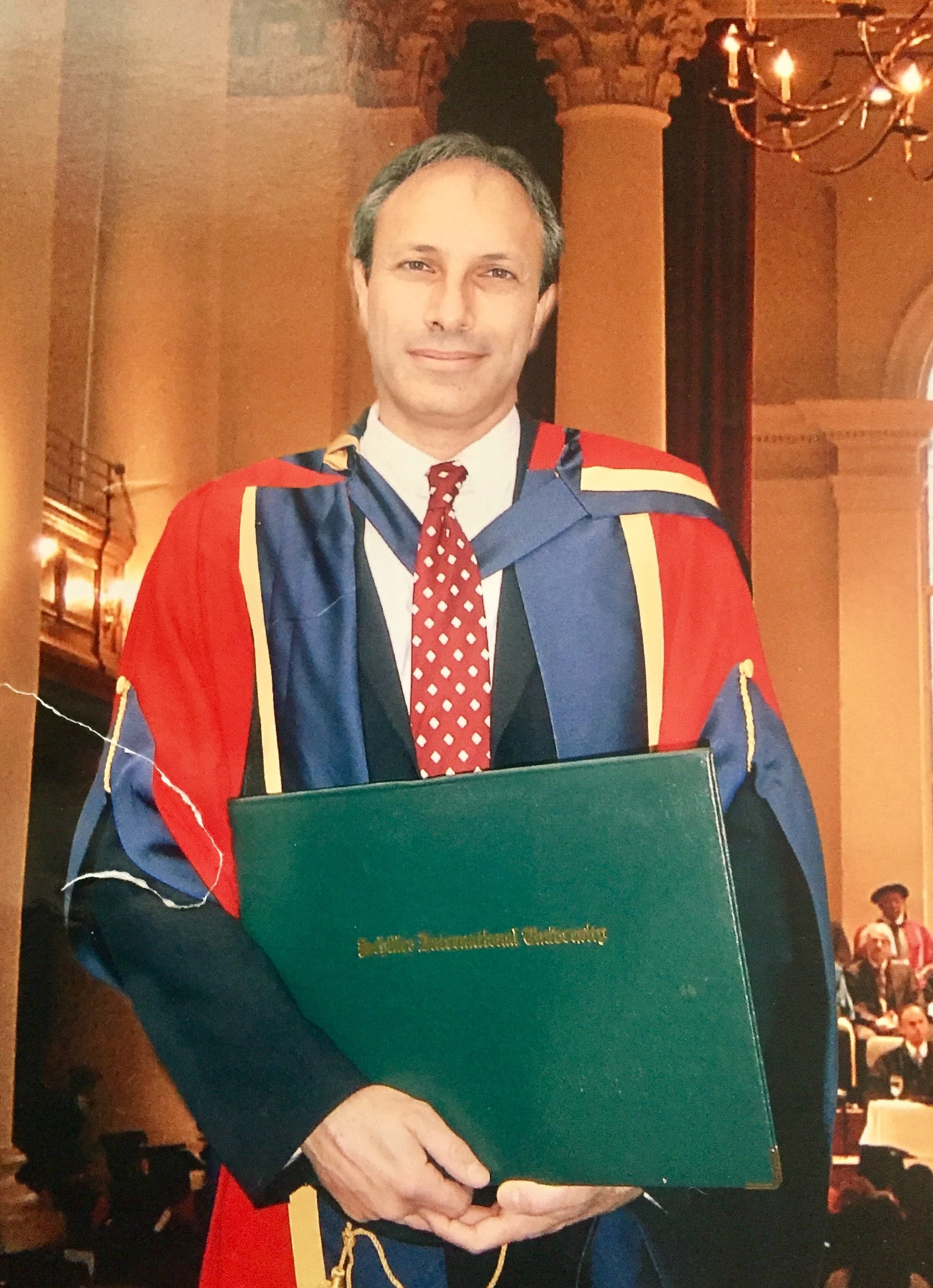 There he met Per Pinstrup- Andersen (2001 World Food Prize Laureate), who was his division director at the time. His work and dedication inspired Haddad, and Haddad learned from him that asking the right questions is just as important as answering questions. Haddad also spoke frequently to Howarth Bouis (2016 World Food Prize Laureate) about his research on nutrition. The research that was going on at IFPRI was so fascinating to Haddad that he asked Bouis to be his thesis advisor. Bouis replied by offering him a job as his research assistant for a long-term project surveying intra-household resource allocation in the Philippines.After receiving his Ph.D. in 1987, Haddad became a lecturer at the University of Warwick and helped establish a master’s degree in Quantitative Development Economics. While there, he co-authored several research papers on intra-household resource allocation, which highlighted the importance of incorporating gender-sensitive measures in nutrition interventions and eventually led to a new field of study at IFPRI. In 1990, Haddad returned to IFPRI as a Research Fellow, then became the director of the Food Consumption and Nutrition Division in 1994.
There he met Per Pinstrup- Andersen (2001 World Food Prize Laureate), who was his division director at the time. His work and dedication inspired Haddad, and Haddad learned from him that asking the right questions is just as important as answering questions. Haddad also spoke frequently to Howarth Bouis (2016 World Food Prize Laureate) about his research on nutrition. The research that was going on at IFPRI was so fascinating to Haddad that he asked Bouis to be his thesis advisor. Bouis replied by offering him a job as his research assistant for a long-term project surveying intra-household resource allocation in the Philippines.After receiving his Ph.D. in 1987, Haddad became a lecturer at the University of Warwick and helped establish a master’s degree in Quantitative Development Economics. While there, he co-authored several research papers on intra-household resource allocation, which highlighted the importance of incorporating gender-sensitive measures in nutrition interventions and eventually led to a new field of study at IFPRI. In 1990, Haddad returned to IFPRI as a Research Fellow, then became the director of the Food Consumption and Nutrition Division in 1994.
He grew the division from 10 people to 30 during his 10 years as director as he led groundbreaking food and nutrition policy studies. Haddad returned to England in 2004 as the Director of IDS. There he leveraged his experience at IFPRI to change the direction of IDS to engage with and influence evidence-based policy in all aspects of development, particularly in regard to nutrition.
One of the initiatives produced under his leadership was the Hunger and Nutrition Commitment Index (HANCI), which ranks governments on their political commitment to tackling hunger and undernutrition in order to provide greater transparency and public accountability. Haddad envisioned and built up IDS as an organization that shapes the agenda for development for both the UK and the world.
Full Biography
David Nabarro
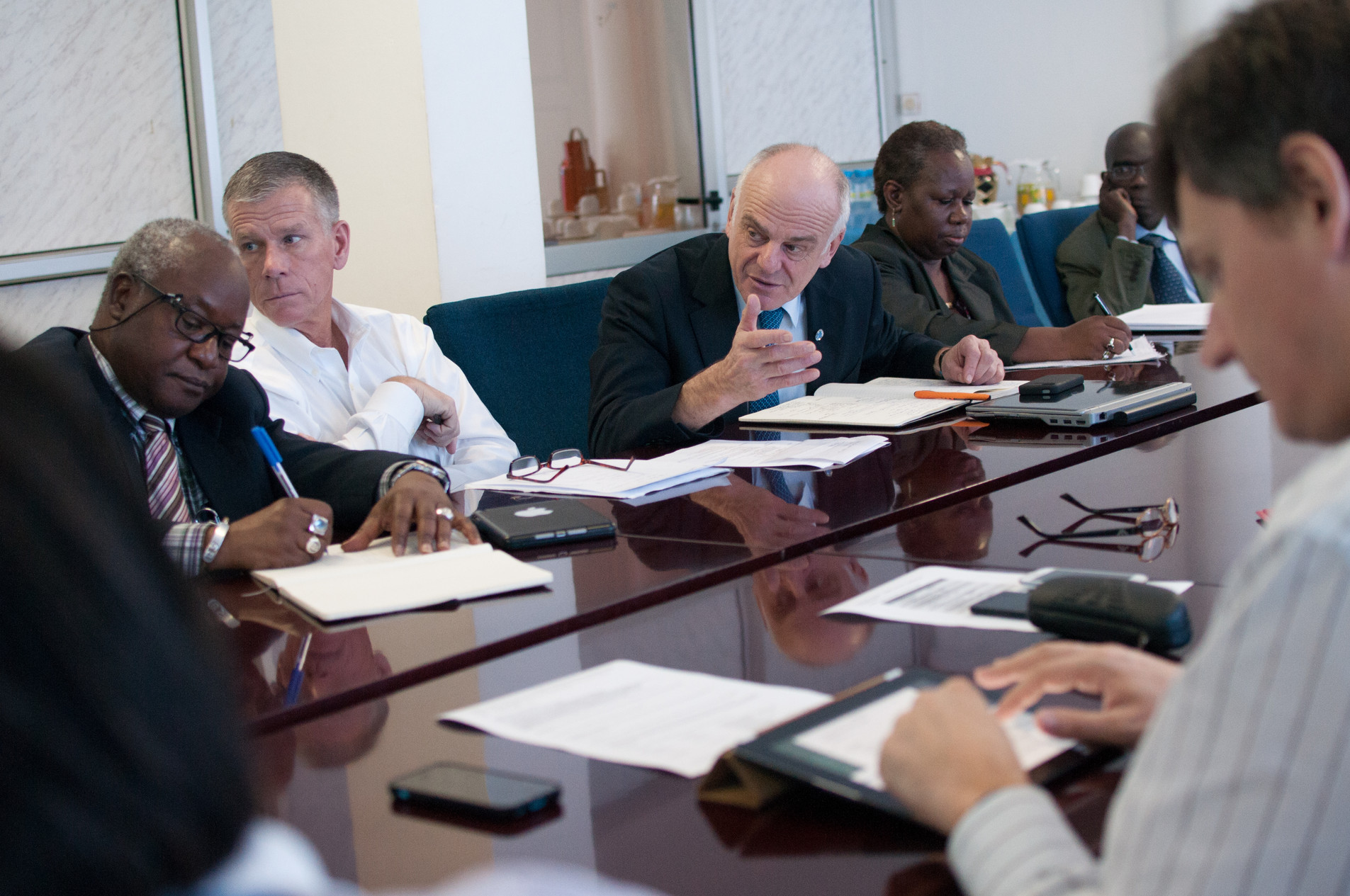 David Nabarro’s inspirational global leadership in combating hunger and undernutrition positioned this issue as central to the global food security and development dialogue, closing the gap that had previously existed among nutritionists, public health practitioners, agricultural scientists, policymakers, humanitarians, and major donor institutions.
David Nabarro’s inspirational global leadership in combating hunger and undernutrition positioned this issue as central to the global food security and development dialogue, closing the gap that had previously existed among nutritionists, public health practitioners, agricultural scientists, policymakers, humanitarians, and major donor institutions.
Through his work in the UN, he was able to unify the disjointed development efforts of these and other public and private sector organizations to successfully confront food insecurity and maternal and child malnutrition in Africa, South Asia, and Latin America.
In 2008, in response to the food price crisis, UN Secretary-General Ban Ki-moon called upon Nabarro to head the newly-created UN High Level Task Force on Global Food Security. Two years later, Nabarro was also appointed the Coordinator of the new Scaling Up Nutrition (SUN) Movement. In these twin roles, he was able to bring together a broad group of stakeholders around nutrition and food security at the national, regional and global levels that included the leaders of dozens of countries suffering from high rates of malnutrition, the heads of UN agencies, representatives from donor groups, and members of civil society organizations.
As a result, agriculture and food went from being a low priority issue to mainstream. The SUN Movement with Nabarro at the helm headed a concerted effort to reduce childhood undernutrition and stunting in the first 1,000 days of life, from pregnancy to two years of age. Under Nabarro’s direction, SUN implemented a multi-sectoral, multi-level and multi-stakeholder approach to reduce child undernutrition and support future economic growth.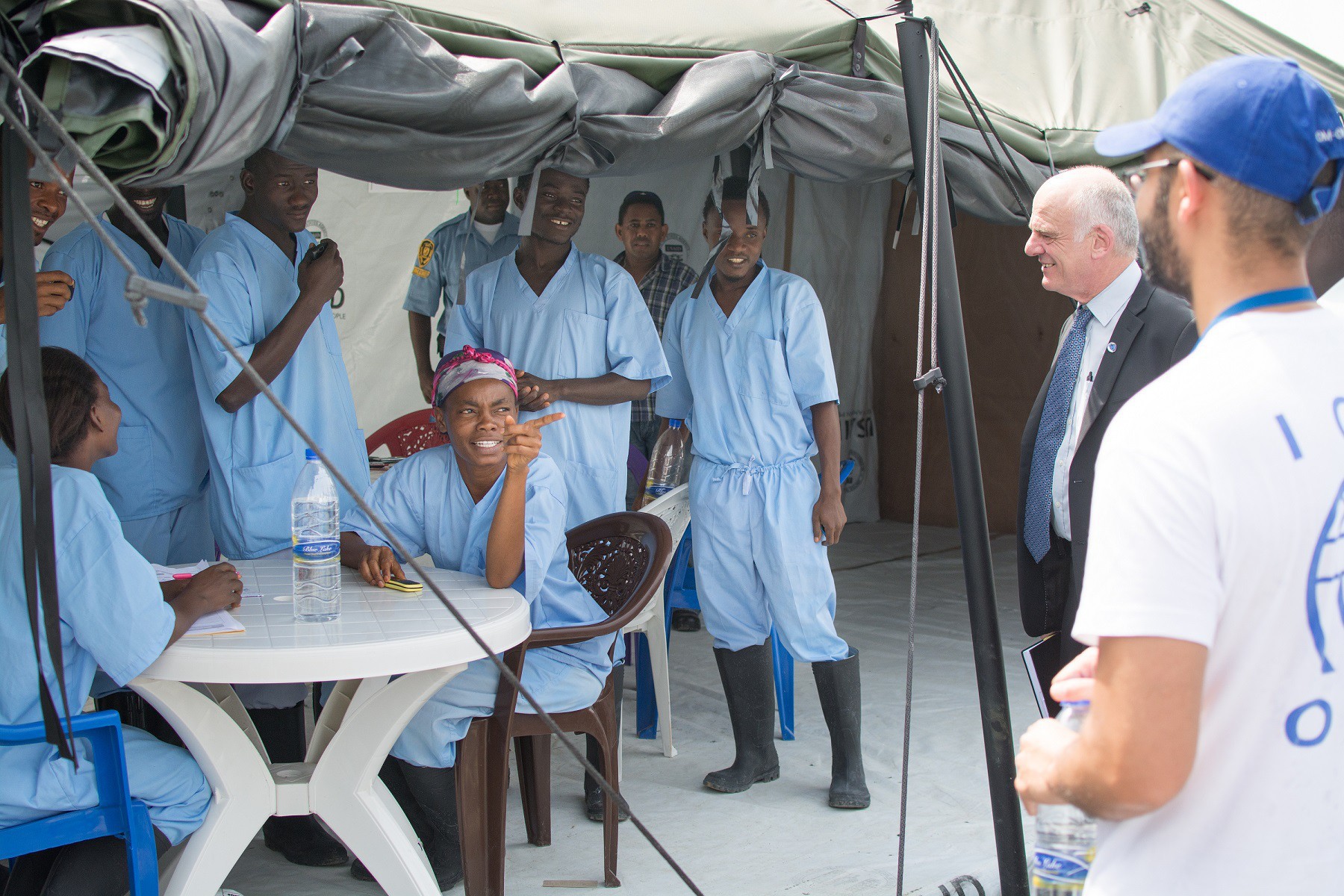
Never before had it been as clear to the global community what the economic and humanitarian costs of undernutrition were for the children affected, their families and their countries. The SUN Movement was built on the recognition of science-based evidence showing the magnitude of the problem and the realization that stakeholders were doing far too little to remedy it. Nabarro jump-started SUN into engaging multiple stakeholders and employing a combination of specific nutrition interventions that national governments led and implemented.
In 2014, when the SUN Movement was strong and making a significant impact in reducing child stunting, Nabarro was asked to take on the appointment of Special Envoy on Ebola and coordinate the UN’s response to the Ebola outbreak in Africa. When he stepped down as SUN’s
Coordinator to take up this new mission, 50 countries encompassing 83 million stunted children had joined the SUN Movement and endorsed nutrition-related laws and policies. The SUN framework and strategies that Nabarro established continue to mobilize political leaders in developing countries to improve the nutritional status of millions of mothers and young children.
When the Ebola crisis subsided, Nabarro assumed a new role as the UN Secretary-General’s Special Adviser on Sustainable 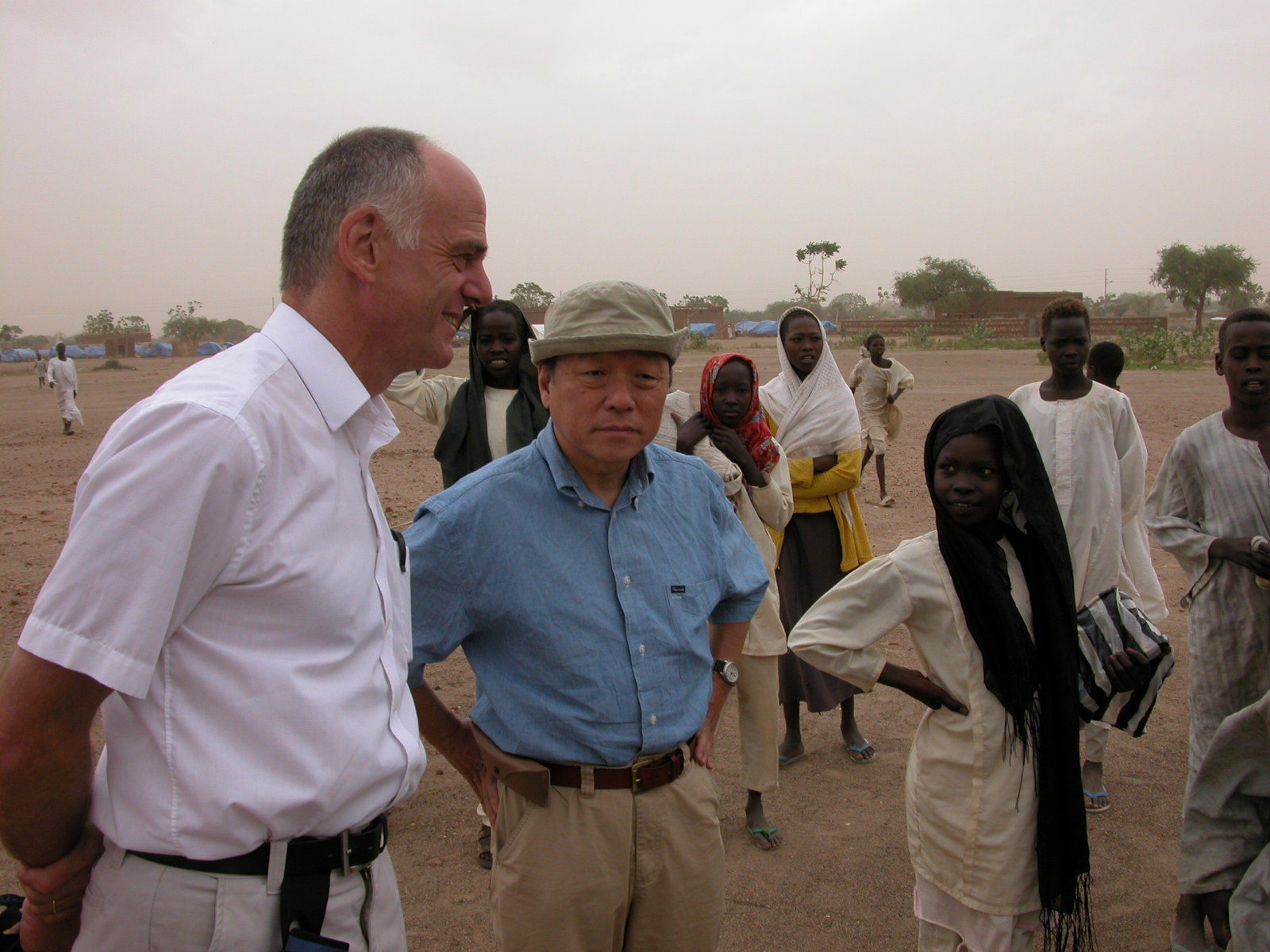 Development and Climate Change and continued to serve as the Special Representative for Food Security and Nutrition.
Development and Climate Change and continued to serve as the Special Representative for Food Security and Nutrition.
Nabarro retired from the UN in June 2017, but continues to serve on SUN’s high level Lead Group, guiding SUN’s activities. By the end of 2017, 59 countries and 3 Indian states had joined SUN. Many, like Myanmar and Nigeria, reported a significant decline in the number of stunted children. Globally, the number of children under five too short for their age has decreased from 165 million in 2012 to 155 million in 2017.
Throughout his time at the UN, Nabarro’s work focused on bringing people and organizations together to work on the most urgent problems facing global health. He continues to work toward this goal through teaching as a professor at Imperial College’s Institute of Global Health Innovation and through 4SD, a social enterprise with a focus on partnering and integrated action that he started to support those implementing the 2030 Agenda for Sustainable Development.
Early Life, Education, and Career
David Nabarro was born in 1949 in London, and lived with his family in North Finchley until he attended boarding school in Eastbourne from the age of eight to thirteen. His father was an endocrinologist and his mother was also a professional in the medical field, so young David seemed slated from an early age to go into a medical career. He graduated from Oundle School at the age of 17 and volunteered for nine months to run Youth Action York, a youth volunteer movement that endeavored to improve the lives of the local poor, elderly, and disabled citizens. He believes that experience was the beginning of his lifelong interest in social work and set the tone for the kind of medical person he would become.
I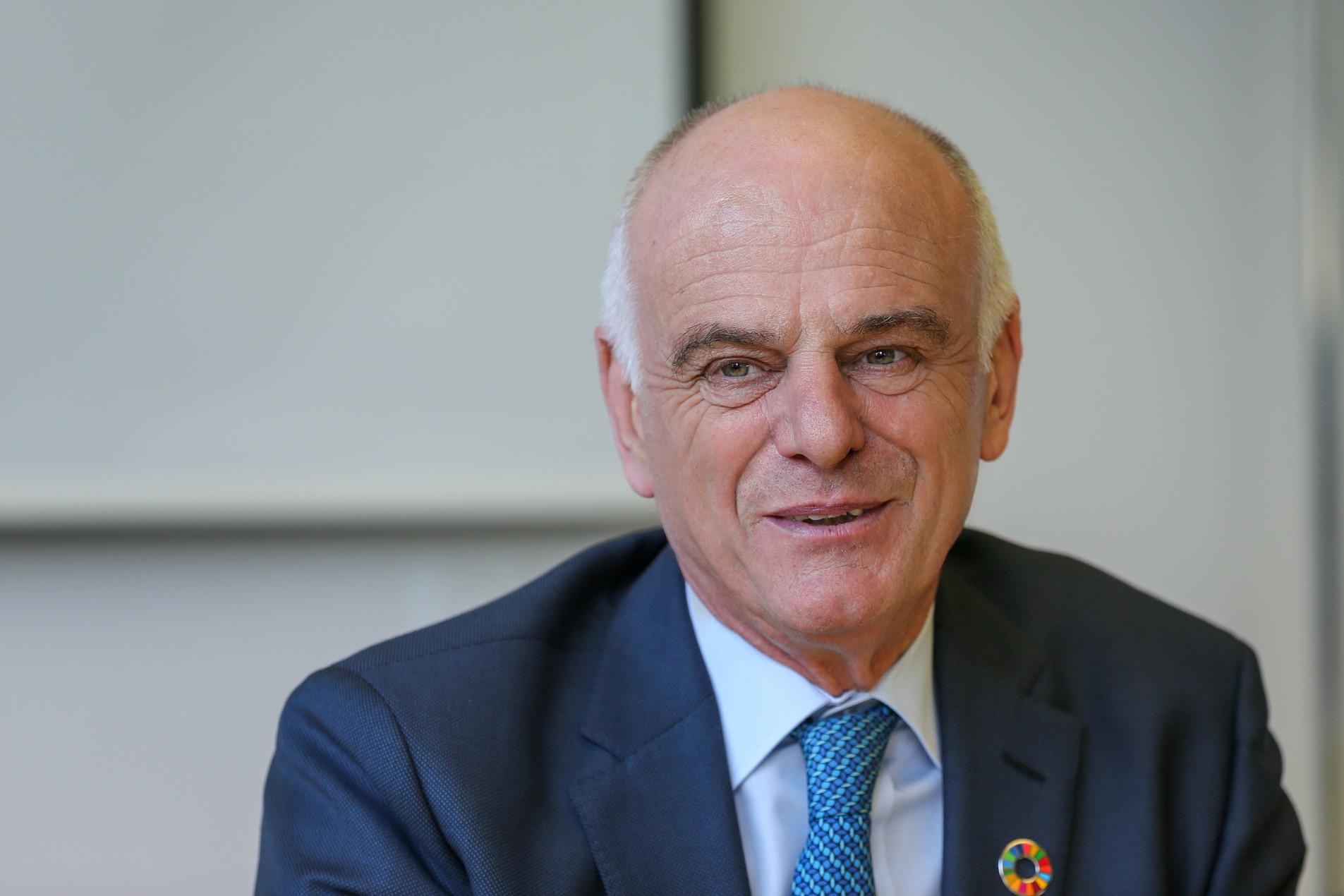 n 1967, Nabarro entered Oxford University and studied physiology for three years, followed by a year of research in endocrinology. By 1974, he had completed his medical degree at Oxford. He later earned a Master’s Degree in Public Health in Developing Countries at the London School of Hygiene and Tropical Medicine.
n 1967, Nabarro entered Oxford University and studied physiology for three years, followed by a year of research in endocrinology. By 1974, he had completed his medical degree at Oxford. He later earned a Master’s Degree in Public Health in Developing Countries at the London School of Hygiene and Tropical Medicine.
Led by his passion for helping the poor, Nabarro went to work in 1974 for a relief team with Save the Children in northern Iraq to provide health services and immunization to Kurdish children caught up in fighting between the Kurds and the Iraqi army under Saddam Hussein. That experience taught Nabarro how difficult it was for people to get good nutrition and to maintain their health under conditions wrought by war. This was a seminal period that shaped the development of his life and career.
He helped set up a child health service in eastern Nepal under the auspices of Save the Children from 1978-79, where he quickly learned about the relationship between nutrition and health and, in particular, the connection between malnourishment and the prevalence of infectious disease. It became clear to him that he wanted to work on the underlying causes of malnutrition, especially in children, and find ways to effectively address them. Splitting his time between teaching at the London School of Tropical Medicine and working on the ground in Southeast Asia from 1982 to 1985, Nabarro was able to gain firsthand knowledge about the complicated linkages between prosperity, nutrition, and health. He also came to realize that nutrition issues can’t be dealt with without full involvement of women because they have such a vital role not just in bringing children into the world but in nurturing those children.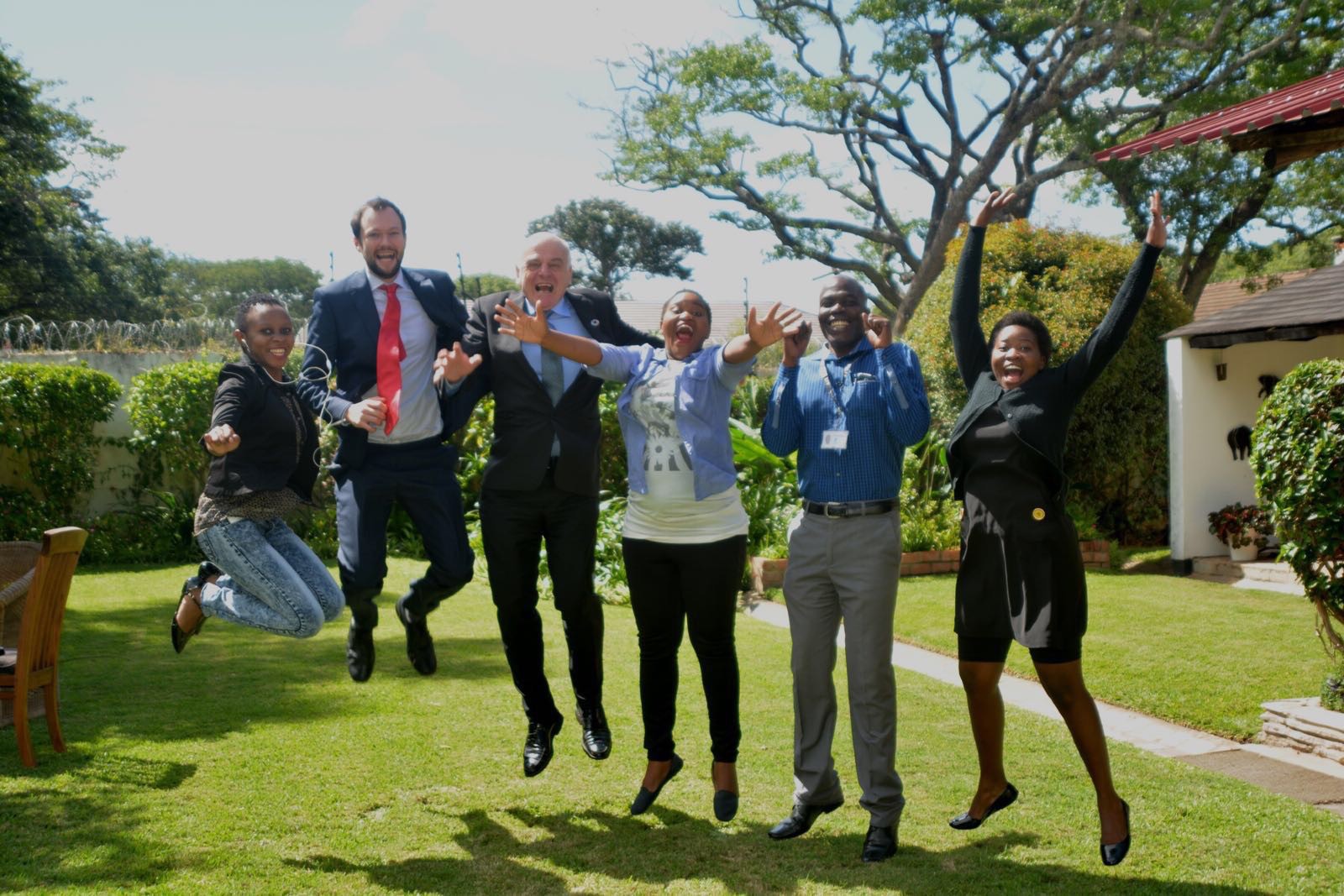
His interest in working on child health guiding him, Nabarro helped set up a new Department of Community Health and taught at the Liverpool School of Tropical Medicine from 1985 to 1989.
He received the opportunity to learn about the British government’s foreign aid system when he became Chief of Health and Population in the British Embassy’s development administration (the precursor to DFID) and was sent to Nairobi, Kenya to help develop strategies to improve the national health and family planning programs in Kenya, Uganda, and Tanzania. After a year in Africa, Nabarro returned to his government position in London with the goal of developing stronger international health programs. Between 1990 and 1999, the British government shifted a large portion of its aid contribution to international health and development.
From 1999 to 2008, Nabarro served at the UN World Health Organization in several capacities: working on a special malaria project, revamping the emergency department, and coordinating the UN systems work on avian influenza and pandemic preparedness.
Additional Links
Drs. Lawrence and Haddad - Borlaug Blog: World Food Prize Playlist
Dr. Haddad on what the World Food Prize Means to Him
Dr. Nabarro on what the World Food Prize Means to Him



